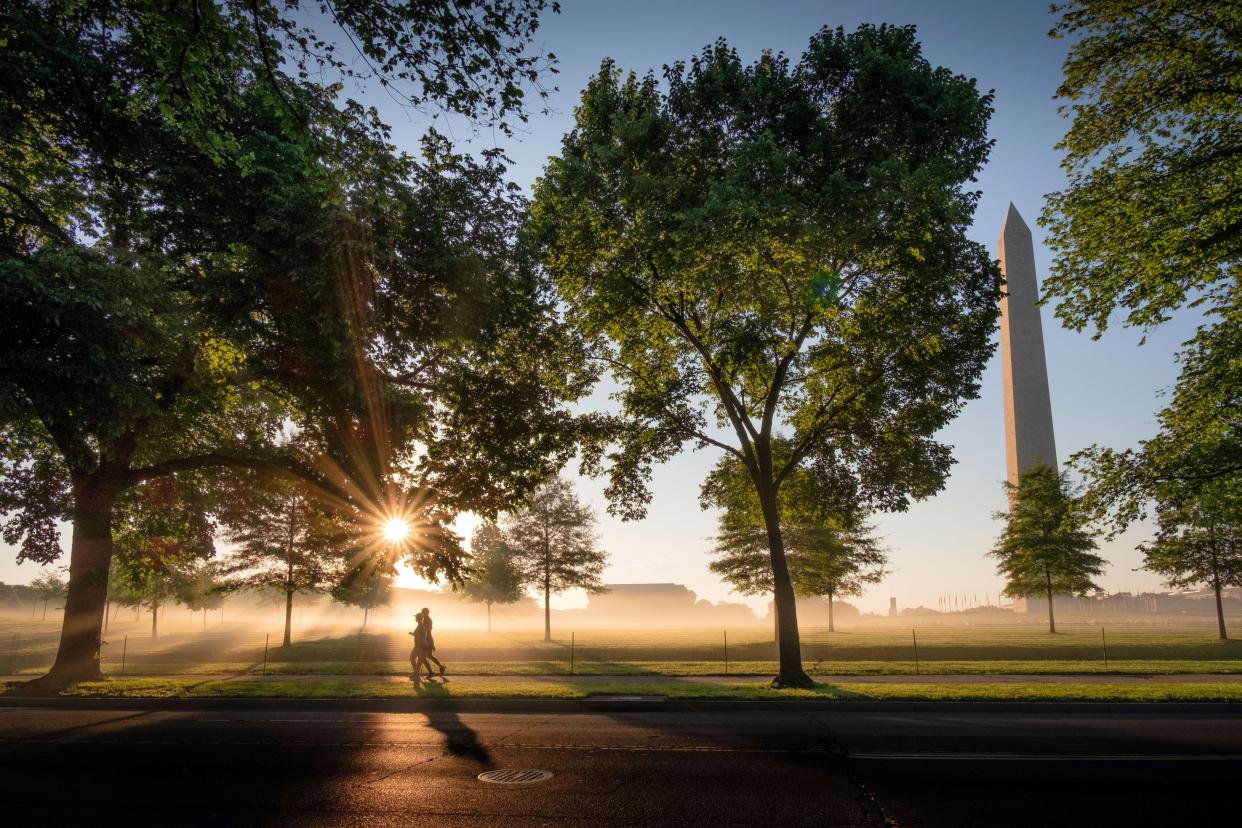Here's how the National Park Service is saving D.C.'s trees from Dutch elm disease

The National Park Service is using IV-like needles to save the beloved trees lining the National Mall and surrounding parks in Washington, D.C., that are infected by Dutch elm disease.
The fungal disease has spread this year to around 200 classic American elm trees on the Mall, the grassy expanse that is home to the iconic monuments of the nation's capital. Dutch elm disease does not cause any harm to people, so visitors need not worry.
Dutch elm disease is a fungoid killer that is spread by the way of bark beetles. An infected tree has immediate symptoms that include wilting suddenly and leaf colors changing from green to yellow to brown.
“The fungus grows and clogs the branches that bring water into the tree until eventually, the tree dies," said Nina Bassuk, professor at the Urban Horticulture Institute in Cornell University.
Palm trees at risk: Florida's iconic palm trees threatened by invasive disease
The park service uses hospital-level precision when taking care of its leafy patients.
Using IVs that are sanitized between trees, park service workers make a minimally invasive scission in order to treat the tree, according to Jason Gillis, park arborist for National Mall and Memorial Parks.
Once a tree has contracted Dutch elm disease, it cannot be cured, but it can be preserved. By looking at the symptoms and responding promptly, Gillis and his team are able to save the dying trees.
"The National Mall Tree Program does not function without the tree crew, they are the boots on the field making this happen," Gillis said.
The tree-saving technology implemented by the crew has advanced.
Gillis and his team are implementing a new management strategy using near-real-time data with a GPS-based system that allows them to track the health of each tree on the Mall as well as in D.C. parks.
"Just like with a medical patient, every treatment a tree has is documented," he said.
The effort to treat and prevent Dutch elm disease is part of the park service's six-month tree care operation on the Mall.
A six-month tree care operation has begun on more than 900 hazard & diseased trees around the National Mall. It includes pruning, repair of support systems, and treatment of diseased trees. We're also removing some 60 mature trees that are at risk of falling or spreading disease. pic.twitter.com/gIkcTqA13a
— National Mall NPS (@NationalMallNPS) August 14, 2019
The care operation is also focused on prevention solutions, so the trees will be less vulnerable to the disease in the future.
Trees to the rescue: Indians plant 220 million trees in single day to combat climate change
The trees that are deemed hazardous to public safety or to other trees are removed in order to cause the least amount of harm.
From now until March, the park service, with local partners Casey Trees and the D.C. Rotary Club, will be tending to 1,110 trees on the Mall and in D.C. parks.
This article originally appeared on USA TODAY: Dutch elm disease: Park service is saving trees on the National Mall

